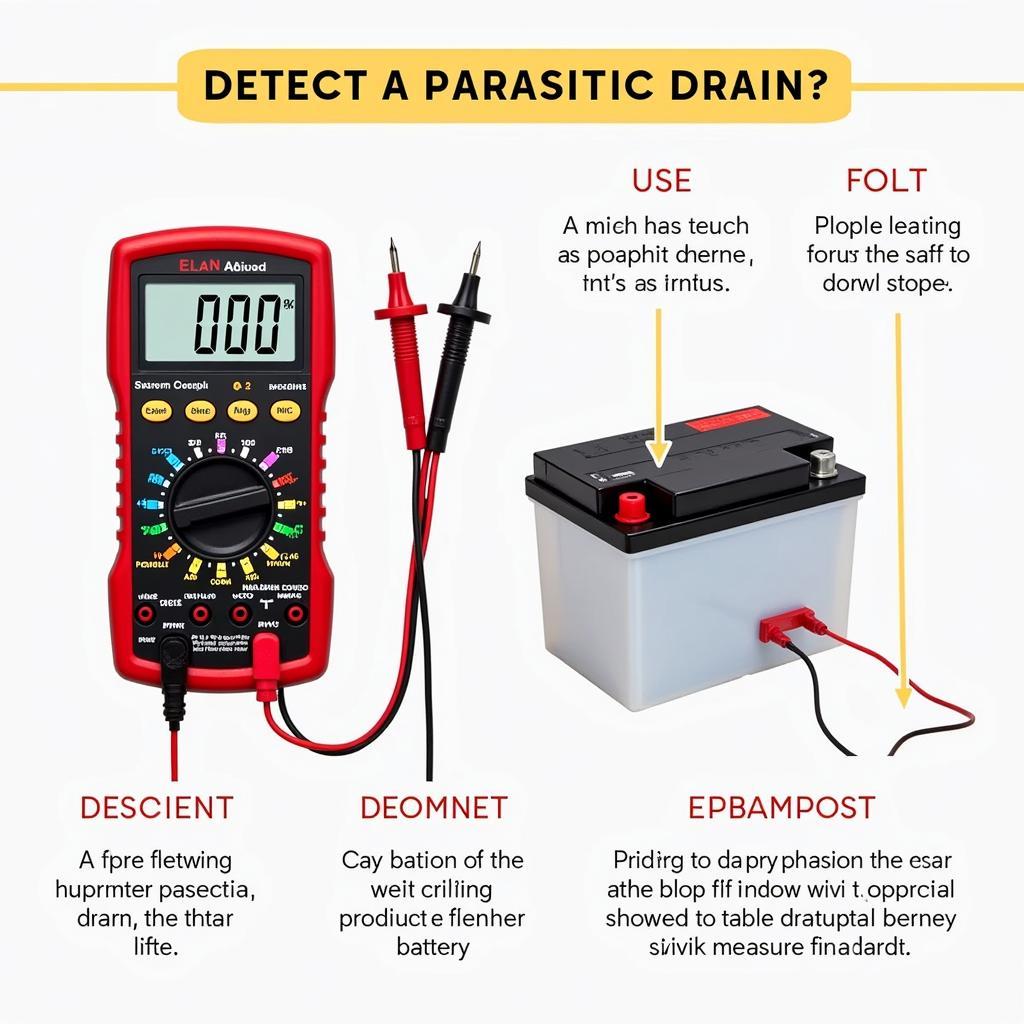A continuously illuminated brake pad warning light on your dashboard is a clear sign that something is amiss with your braking system. Ignoring it can have serious consequences for your safety on the road. This article explores the common reasons behind a persistent brake pad warning light and provides you with the knowledge to address this issue effectively.
Understanding Your Brake Pad Warning Light
The brake pad warning light is a crucial component of your car’s safety system. It’s designed to illuminate when your brake pads wear down to a certain point, signaling the need for replacement. This light is usually triggered by a sensor in your brake system, often embedded within the brake pad itself.
Common Causes of a Brake Pad Warning Light Staying On
While worn brake pads are the most common culprit, several other factors can cause your brake pad warning light to stay on. Let’s delve into some of the most prevalent reasons:
1. Worn Brake Pads
This is the most straightforward reason. As you use your brakes, the friction material on the pads gradually wears down. Once the pad material reaches a certain minimum thickness, the brake pad sensor triggers the warning light on your dashboard.
2. Faulty Brake Pad Sensor
Sometimes, the sensor itself can malfunction. This could be due to damage to the sensor wire, corrosion, or simply a faulty sensor. A malfunctioning sensor might send a false signal to your car’s computer, causing the warning light to stay on even if your brake pads are in good condition.
3. Low Brake Fluid Level
Your car’s brake system relies on hydraulic pressure to function properly. Low brake fluid levels can cause a drop in this pressure, triggering the warning light. This often indicates a leak in the braking system.
4. Issues with the ABS System
Modern cars are equipped with an Anti-lock Braking System (ABS). This system prevents the wheels from locking up during hard braking. If there’s a problem with your ABS, such as a faulty wheel speed sensor or a malfunctioning ABS module, the brake pad warning light might illuminate.
5. Stuck Brake Caliper
The brake caliper houses the brake pads and pistons. If a caliper becomes stuck in the applied position, it can cause the brake pads to constantly rub against the rotor. This can lead to premature wear and trigger the warning light.
Troubleshooting a Brake Pad Warning Light
Here’s a step-by-step guide to help you diagnose the issue:
-
Check Your Brake Pads: Begin by inspecting your brake pads. If they appear significantly thinner than usual or you notice deep grooves, it’s time for a replacement.
-
Inspect the Brake Pad Sensor: If your brake pads appear to be in good shape, examine the brake pad sensor for any visible damage or corrosion. You might need a multimeter to test its continuity.
-
Check Your Brake Fluid Level: Ensure the brake fluid level in the reservoir is within the recommended range. If it’s low, there might be a leak in the system.
If you’re uncomfortable working on your car’s brake system, it’s always safest to consult a qualified mechanic.
Remote Diagnostics and Software Solutions
In today’s technologically advanced world, remote diagnostics and software solutions are playing an increasing role in automotive repair. If you suspect an issue beyond simple brake pad wear, consider seeking remote assistance from qualified technicians. These experts can remotely access your car’s computer system, diagnose the problem, and even reprogram certain components to resolve software-related issues.
This can be an efficient and cost-effective solution for issues related to:
-
ABS System Malfunctions: Remote diagnostics can pinpoint faulty sensors or modules within the ABS system.
-
Electronic Parking Brake Issues: Modern cars often have electronic parking brakes. Software glitches can be diagnosed and rectified remotely.
-
Brake Control Module Problems: The brake control module is the brain of your braking system. Remote reprogramming can address software errors within this module.
brake system warning light mini cooper
Importance of Timely Brake System Maintenance
A well-maintained brake system is crucial for your safety and the longevity of your vehicle. Here’s why you should never ignore brake system issues:
-
Safety First: Your brakes are arguably the most important safety feature of your car.
-
Prevent Costly Repairs: Addressing brake problems early can prevent more extensive and expensive damage down the road.
-
Improved Fuel Efficiency: Worn brake pads create more friction, reducing your fuel efficiency.
2004 ford fr50 brake warning light
Conclusion
A brake pad warning light that stays on should never be ignored. While worn brake pads are the most common cause, it’s essential to consider other possibilities, including sensor malfunctions, low brake fluid, and issues with your ABS system. Regular maintenance, timely inspections, and leveraging advancements like remote diagnostics can help ensure your brake system remains in optimal condition, keeping you safe on the road.
toyota highlander brake malfunction warning
FAQs
1. How long can I drive with the brake pad warning light on?
It’s not recommended to drive with the brake pad warning light on. You risk severely damaging your braking system and jeopardizing your safety.
2. Can I replace my brake pads myself?
While possible for those with mechanical expertise, brake pad replacement is best left to professionals. Improper installation can compromise your braking system.
3. How often should I get my brakes checked?
It’s generally recommended to have your brakes inspected at least once a year or every 12,000 miles.
4. What does a soft brake pedal indicate?
A soft or spongy brake pedal often signifies air in the brake lines or a problem with the master cylinder.
5. Can extreme temperatures affect my brakes?
Yes, extreme heat or cold can affect brake fluid viscosity and potentially impact braking performance.

